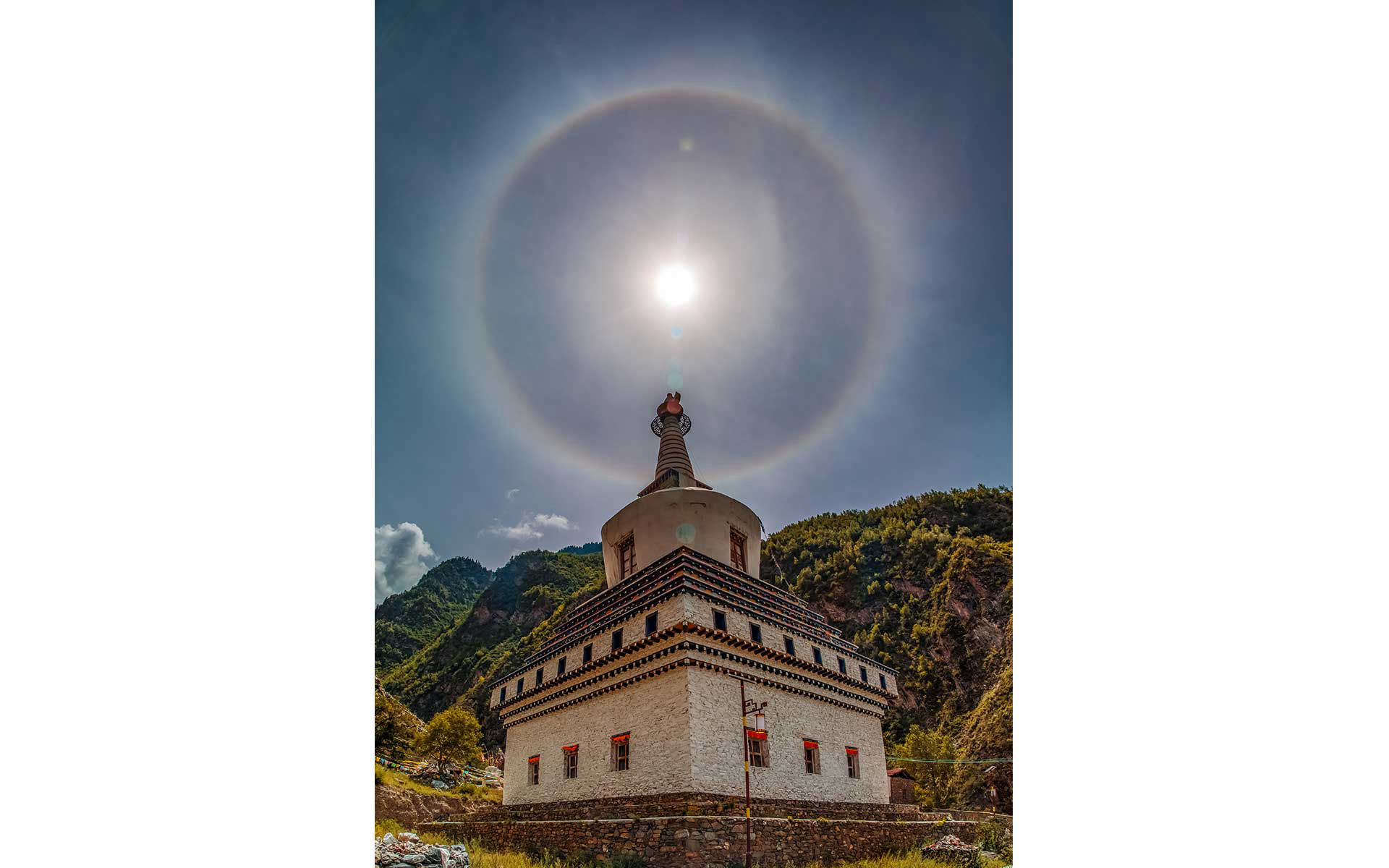
四川省松潘縣岷江鄉的龍安堂,是座藏傳佛教的廟宇。高大的白塔上空,太陽的周圍出現了一圈完整的日暈
,就似白塔上的佛光一般,令人感到神聖無比。日暈,又叫圓虹,是日光通過捲層雲時,受到冰晶的折射或反射,分散成不同方向的各色光。日暈半徑的視角一般是 22 度和 46 度,人們通常可以用肉眼觀察到日暈現象。雲層中冰晶含量越大,光環也就越顯著;反之則無法形成日暈,或
者即使形成,也無法在地面上清楚地
觀察到這一現象。日暈多出現在春夏
季節,俗諺云「日暈三更雨,月暈午
時風」,意思是若出現日暈的話,夜
半三更將有雨;若出現月暈,則次日中午會颳風。日暈在一定程度上成為
天氣變化的一種前兆,出現日暈則天氣有可能轉陰或下雨。
Longan is a Tibetan Buddhist temple
in Minjiang Township, Songpan County,
Sichuan Province, China. Its main feature
is a white tower. Just above it appeared a
solar halo, which looked like a flammule,
creating a sense of the divine. Solar halos
are also called full-circle rainbows and are
caused by sunlight penetrating cirrus
cloud layer, which is then refracted or
reflected by ice crystals in the atmosphere
and scattered. The angle of radius is
generally 22° or 46°. Most solar halos are
visible to the naked eye. The more ice
crystals there are in the cloud layer, the
more obvious the halo. Otherwise, it may
not be possible for a halo to form or to be
observed from the ground. Solar halos are
more common in spring and summer.
There is an old Chinese saying that if
there is a solar halo, it will rain during the
night and if there is a lunar halo, a typhoon
will hit the following afternoon. Solar halos
are a sign of weather change, such as
impending clouds or rain.
展示地點
第二特展室
展示時間
2019.07.13 - 2020.02.16
© 國立自然科學博物館版權所有